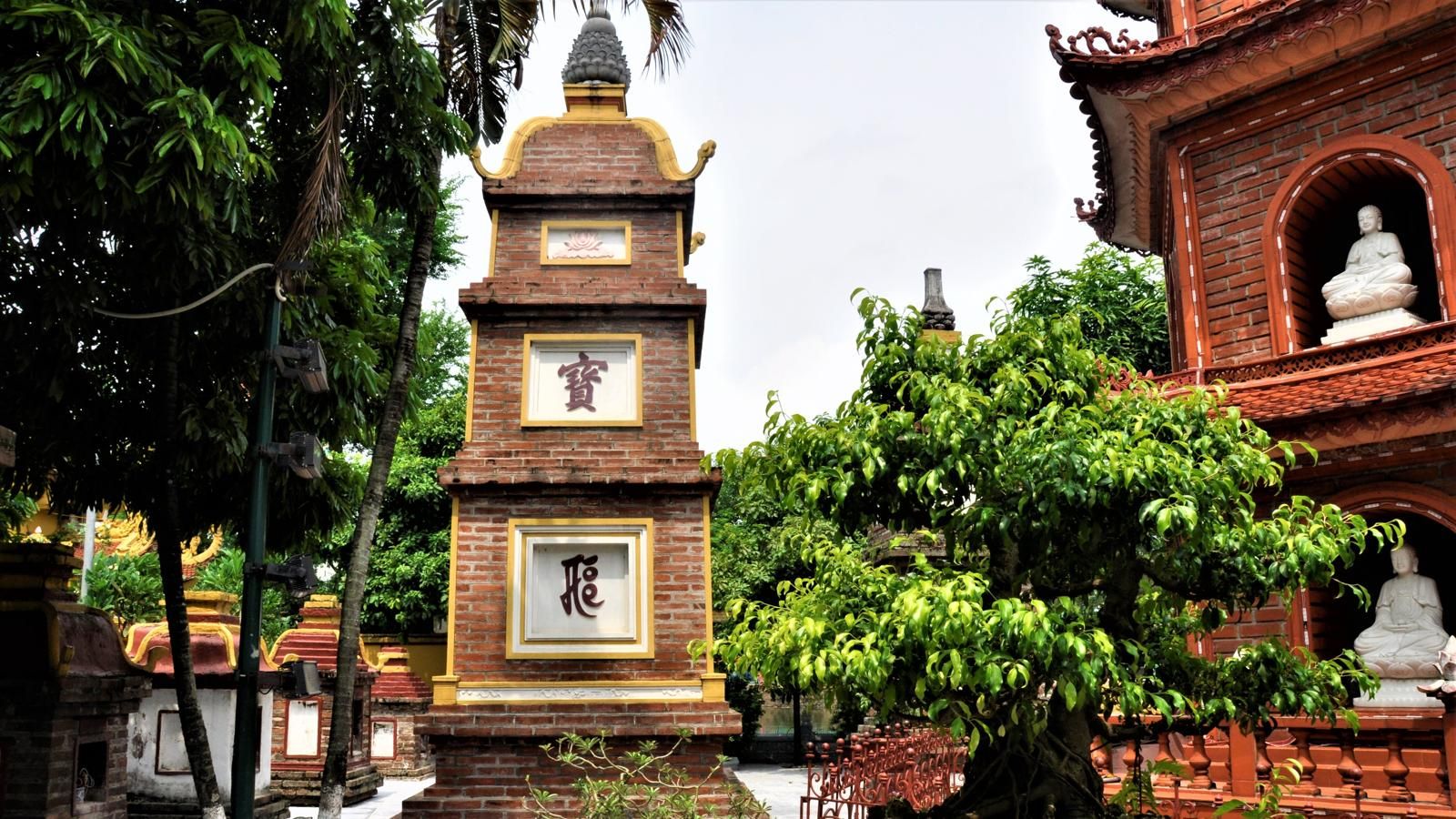
Tran Quoc Pagoda
1. Location and Access
Tran Quoc Pagoda is situated on a small islet of West Lake in Tay Ho District, Hanoi. Visitors can enter through the main gate at No. 46, Thanh Nien Street. The pagoda worships Amitabha Buddha, Shakyamuni Buddha, and Avalokitesvara Bodhisattva, with an altar dedicated to Guan Yu, Guan Ping, Zhou Shang, and Anathapindika. It is conveniently close to other major attractions like the Ho Chi Minh Mausoleum and the Temple of Literature.
2. Key Highlights
2.1 Long-standing History
With a history of nearly 1,500 years, Tran Quoc Pagoda is Hanoi's oldest pagoda. Built in 541 during the Early Ly Dynasty, it was originally called Khai Quoc Pagoda. Relocated in 1615 due to dyke collapses, it was renamed Tran Quoc by King Le Hy Tong to symbolize peace and protection from natural disasters. Today, it remains a symbol of Hanoi's rich Buddhist heritage.
2.2 Marvelous Architectural Complex
Tran Quoc Pagoda's 3,000-square-meter design embodies traditional Eastern architectural beauty with intricate woodwork, curved roofs, and delicate ornamentation. Key features include:
- 11-Storey Stupa (Bao Thap): A majestic red-brown tower with eleven stories, each adorned with white gemstone statues of Amitabha Buddha.
- Front House (Tien Duong): Houses unique statues, including the most beautiful Lying Buddha statue in Vietnam.
- Incense Burning House (Nha Thieu Huong): A bustling focal point for visitors to burn incense and pray for good luck and health.
- Upper House (Thuong Dien): Features a bell post and the Stele House, preserving 14 steles with poems and historical records.
- The Bodhi Tree: A sacred tree gifted by India's former President Rajendra Prasad in 1959, adding to the site's spiritual ambiance.
3. Visitor Information
- Opening Hours:
- Regular days: 8 AM - 4 PM
- Lunar New Year’s Eve: all night
- 1st and 15th days of lunar month: 6 AM - 6 PM
- Entrance Fee: Free
- Dress Code: Formal, non-revealing clothing (no shorts, mini skirts, or tank tops).
Tran Quoc Pagoda is most crowded on the 1st and 15th days of the lunar month, especially during Tet holiday. For a more serene experience, visit on regular days.
4. Directions
Located in Tay Ho District, Tran Quoc Pagoda is easily accessible by bus (routes 33 and 50), personal vehicle, or taxi. Local residents are familiar with the pagoda's location, so feel free to ask for directions if needed.
Conclusion
With its long-standing history, impressive architecture, and remarkable cultural values, Tran Quoc Pagoda is one of Hanoi's top tourist attractions. Visiting this religious site offers a chance to immerse yourself in calming nature and pray for your loved ones.